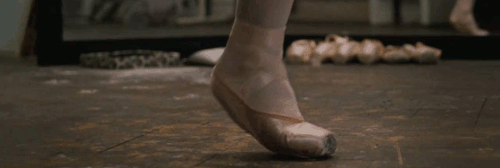
Re-printed from Science Daily:
Ballet dancers’ brains adapt to stop them getting in a spin
Scientists have discovered differences in the brain structure of ballet dancers that may help them avoid feeling dizzy when they perform pirouettes.
The research suggests that years of training can enable dancers to suppress signals from the balance organs in the inner ear.
The findings, published in the journal Cerebral Cortex, could help to improve treatment for patients with chronic dizziness. Around one in four people experience this condition at some time in their lives.
Normally, the feeling of dizziness stems from the vestibular organs in the inner ear. These fluid-filled chambers sense rotation of the head through tiny hairs that sense the fluid moving. After turning around rapidly, the fluid continues to move, which can make you feel like you’re still spinning.
Ballet dancers can perform multiple pirouettes with little or no feeling of dizziness. The findings show that this feat isn’t just down to spotting, a technique dancers use that involves rapidly moving the head to fix their gaze on the same spot as much as possible.
Researchers at Imperial College London recruited 29 female ballet dancers and, as a comparison group, 20 female rowers whose age and fitness levels matched the dancers’.
The volunteers were spun around in a chair in a dark room. They were asked to turn a handle in time with how quickly they felt like they were still spinning after they had stopped. The researchers also measured eye reflexes triggered by input from the vestibular organs. Later, they examined the participants’ brain structure with MRI scans.
In dancers, both the eye reflexes and their perception of spinning lasted a shorter time than in the rowers.
Dr Barry Seemungal, from the Department of Medicine at Imperial, said: “Dizziness, which is the feeling that we are moving when in fact we are still, is a common problem. I see a lot of patients who have suffered from dizziness for a long time. Ballet dancers seem to be able to train themselves not to get dizzy, so we wondered whether we could use the same principles to help our patients.”
The brain scans revealed differences between the groups in two parts of the brain: an area in the cerebellum where sensory input from the vestibular organs is processed and in the cerebral cortex, which is responsible for the perception of dizziness.
The area in the cerebellum was smaller in dancers. Dr Seemungal thinks this is because dancers would be better off not using their vestibular systems, relying instead on highly co-ordinated pre-programmed movements.
“It’s not useful for a ballet dancer to feel dizzy or off balance. Their brains adapt over years of training to suppress that input. Consequently, the signal going to the brain areas responsible for perception of dizziness in the cerebral cortex is reduced, making dancers resistant to feeling dizzy. If we can target that same brain area or monitor it in patients with chronic dizziness, we can begin to understand how to treat them better.”
Another finding in the study may be important for how chronic dizzy patients are tested in the clinic. In the control group, the perception of spinning closely matched the eye reflexes triggered by vestibular signals, but in dancers, the two were uncoupled.
“This shows that the sensation of spinning is separate from the reflexes that make your eyes move back and forth,” Dr Seemungal said. “In many clinics, it’s common to only measure the reflexes, meaning that when these tests come back normal the patient is told that there is nothing wrong. But that’s only half the story. You need to look at tests that assess both reflex and sensation.”
Oxford Journal study: The Neuroanatomical Correlates of Training-Related Perceptuo-Reflex Uncoupling in Dancers
-
Cereb. Cortex (2015) 25 (2): 554-562. doi: 10.1093/cercor/bht266
Springing from the high society of the 15th century Italian Renaissance courts, we have ballet; a highly technical form of dance with its own vocabulary. This short video illustrates the birth of ballet as a means to entertain a very small portion of society to become a world-wide sensation appreciated by millions.
We couldn’t agree with Neil deGrasse Tyson more! While he may be best know as an astrophysicist, those aren’t the only stars he’s familiar with. He has said that when he was in college at Harvard, he was a preforming member of 3 different dance companies and still maintains a great deal of respect for the art, the stage, and the demanding work ethic required.
Come see us up close!
How do they do that!?! While the simplified conclusion of this video is that it come down to a matter of science, dancers know that there is so much more to it! Physics yes, but also countless hours of practice, pure devotion, and dedication to achieve such mesmerizing level of precision and grace.
“In the third act of “Swan Lake”, the Black Swan pulls off a seemingly endless series of turns, bobbing up and down on one pointed foot and spinning around and around and around … thirty-two times. How is this move — which is called a fouetté — even possible? Arleen Sugano unravels the physics of this famous ballet move.”

Grammar Question: is it on point or en pointe??
The two terms are often confused, and can at times be interchangeable. I’ll let you read the explanations given in this Grammarly blog, and decide for yourself which is best. But I think it’s safe to say our dancers are both!! Click HERE








